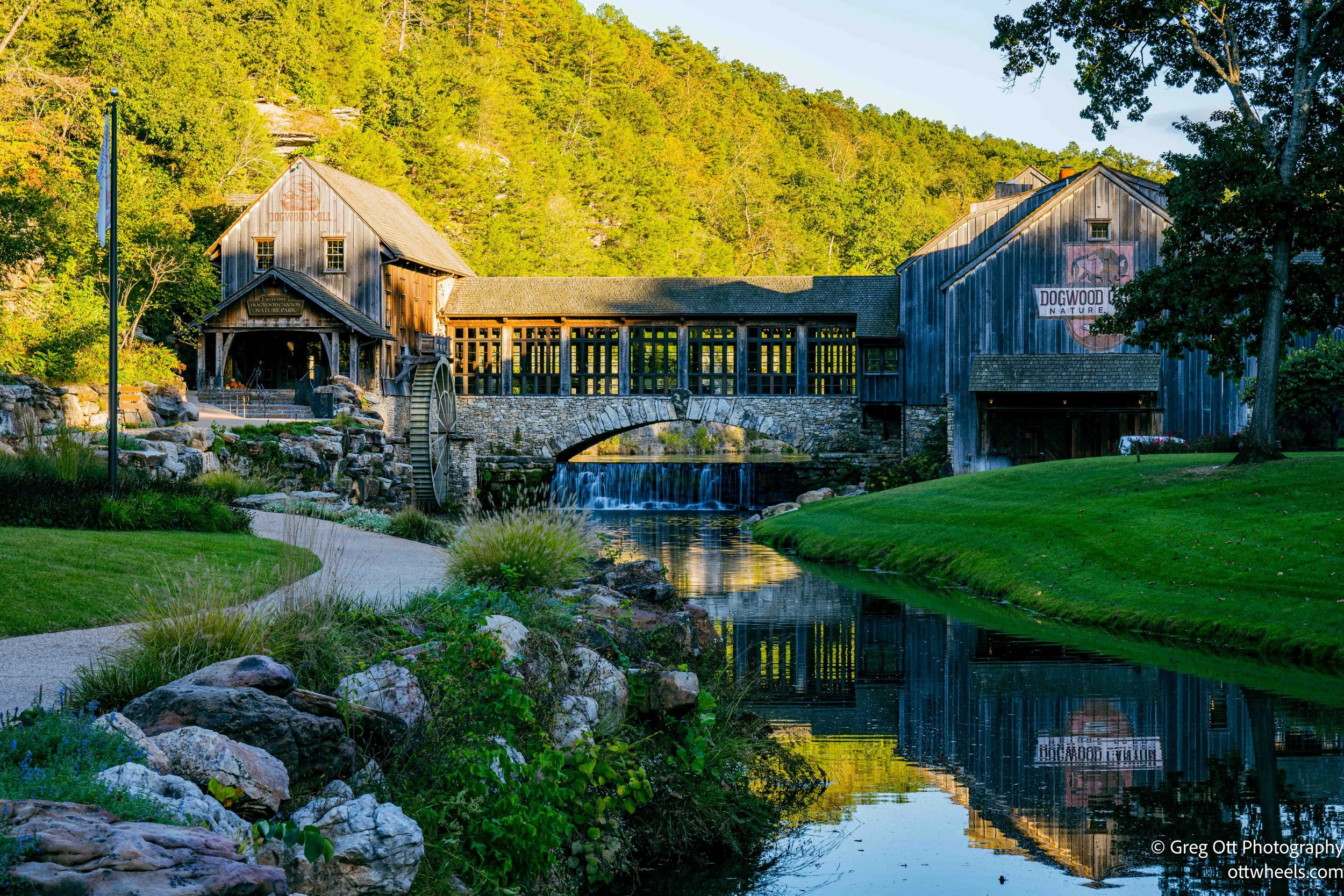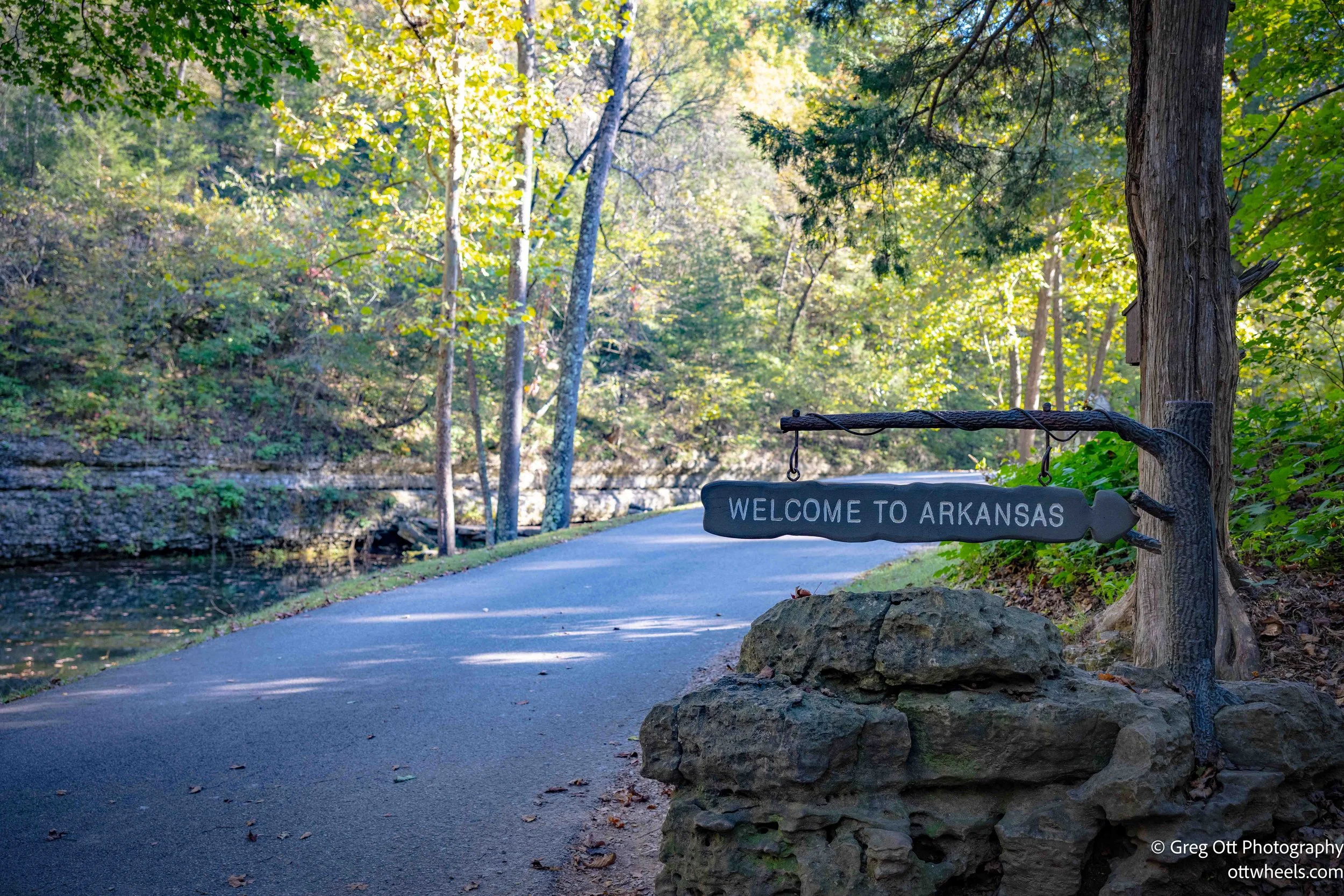Dogwood Canyon Nature Park
I went to Dogwood Canyon in Missouri. I arrived around 10:30, and there was a big sign that read, “All Campers and RVs—don’t even think about entering here. Call…” There was a woman behind me who looked like she worked there, so I asked her how to enter if I couldn’t go through the main gate. She said to call the number, and someone would come escort me in through the exit road, which isn’t as steep. I called—no answer—and left a message. After 10 minutes of waiting, I drove off. About five minutes later, I got a call back. I turned around, and there was a woman with security waiting at the exit. I had to wait for a few cars to leave, then drove in through the wrong way—officially.
Someone was waiting at the bottom and directed me to one of the RV parking spots. There were five other camper vans of different makes and models, one of them easily a $200K rig. I took care of a few things in my van and decided to head out a little after noon.
There was a short line to get tickets. I chatted with the couple in front of me. They’d been here a few times and said fall was the best—fewer people, perfect weather, and plenty of color. If you plan to visit often, the $75 annual pass might be worth it. I went with the single-day pass at $19 plus tax.
Dogwood Canyon Nature Park is the vision of Johnny Morris, founder of Bass Pro Shops. He bought the land in the 1990s and began restoring what had been overgrazed and eroded ranchland into a pristine natural preserve. The park covers about 10,000 acres that straddle the Missouri–Arkansas border, with limestone bluffs, crystal streams, and narrow valleys carved by water over thousands of years. The goal from the start was to create a place that blended conservation, education, and outdoor recreation—a living classroom where people could reconnect with the natural beauty of the Ozarks.
Much of Dogwood Canyon’s philosophy revolves around restoration rather than construction. The staff have spent decades bringing back native plant life and reintroducing species like bison, elk, and longhorn cattle to areas that were once part of their range. The park is owned and operated by the nonprofit Dogwood Canyon Foundation, whose mission is “to connect people with nature through education, conservation, and outdoor adventure.” Revenue from the park supports wildlife programs, youth education, and ongoing habitat restoration. The approach is part nature preserve, part outdoor museum, and part eco-tourism project.
Despite its natural setting, Dogwood Canyon is also a study in how curated nature can be. Every bridge, fence, and stone wall looks hand-placed—and probably was. The park’s signature waterfalls are man-made but cleverly designed to blend into the landscape. Some might call it over-manicured, but it’s hard to deny the attention to detail or the sense of calm it provides. For many families, it’s a chance to experience nature without getting muddy boots or worrying about finding their way back.
You enter the grounds through the museum, restaurant, and visitor center. I decided to have lunch first and took a seat at the bar. I already knew I’d walk instead of taking the tram tour, so I went with a lighter grilled chicken salad. The menu isn’t extensive, but the quality was good, and the atmosphere was relaxed. Prices were reasonable, too. It took about 30 minutes for my food to arrive—no big deal, but surprising since the wait staff was hustling. Maybe the kitchen was just backed up. Either way, it gave me time to look around and enjoy the big timber beams, the stone fireplace, and the view of the stream outside.
After lunch, I began my 6.5-mile out-and-back walk. People didn’t really talk to each other—typical of resort areas, not remote forest trails. The paved path winds alongside a clear, spring-fed creek that you cross again and again over wooden bridges. Every turn reveals another waterfall or pool, all picture-perfect. To be honest, I was a little disappointed. For me, Dogwood Canyon felt overbuilt. Everything was perfectly manicured—the bridges, overlooks, and waterfalls. It all felt a little too curated, like nature with a stylist. The waterfalls looked fed by hidden pumps in the hills above. I’ve seen state parks that do this to recreate the old flow, but here it just felt a bit too controlled.
Around the three-mile mark, I reached the Missouri–Arkansas border. A guy in a golf cart was parked nearby, watching me take photos. He said, “The light’s getting a little softer,” and I replied, “It’d be nice if it were a lot softer.” He laughed and told me he worked for the park. He mentioned that the tram tour continues beyond where the walking trail ends—another mile deeper into the canyon—where visitors can see bison, elk, longhorns, and deer. Unfortunately, only tours or staff can go beyond that point late in the day.
I stopped often to watch people and take in the scenery. The best part came after 4 p.m., when the crowds thinned out and the birds began to return. The light softened, the air cooled, and for the first time, the place felt less like a resort and more like a canyon. I stayed until after 6 p.m.—the last one out. As I neared the visitor center, I spotted a great blue heron standing motionless in the shallows, its reflection perfectly mirrored in the still water. For that brief moment, Dogwood Canyon was exactly what it wanted to be—quiet, beautiful, and natural.













